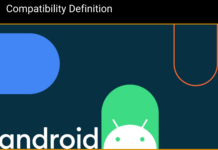Google has given the developers, something new to play with. The release of Android L preview at the Google’s I/O developers conference has created a new temptation among the Android enthusiasts, and everyone is now willing to get this latest and greatest Android firmware on their Android device. Although its just preview, and even the name of the next Android isn’t known yet, but still its worth getting your device the taste of next Android version once as it comes with a number of heavy enhancements, battery improvements, security improvements and the material design UI that adds the charm.
To calm down and bring a little happiness on the faces of Google Nexus 4 owners, XDA dev sykopompos has ported the developer preview of the Android L, the beta version for the Nexus 4 for now. Here’s our guide that will help you to update your Google Nexus 4 with Android L developer preview, just go ahead and install it on your device right now.
Before you install the ported Android L on your Nexus 4, it may be kept in mind that the image that Google rolled it, is not stable and may contain a number of bugs and the ported firmware comes from the same. So, do not expect this firmware to run perfectly, you may face a number of bugs. However, you can quickly switch back to your device’s previous firmware using the Nandroid backup or by flashing a stock image.
Early Preparations:
- This guide is only for Google Nexus 4. Do not try this on any other device, please check your device’s model in Settings > About Device > Model.
- Your devices must have a custom recovery installed. Check out our One Click Unlock/Root/Custom Recovery Flash Method for Google Nexus 4
- You must have installed Google USB drivers. Get here.
- Enable USB debugging mode on your Nexus device. If you haven’t done this already, go to Settings > About Device > Tap the build number for 7 times and you will get the developer options enabled, no go to Settings > Developer Options > USB debugging > Enable.
- Your device’s battery should be charged at least over 60%. This is highly recommended in order to prevent any power issues during the flashing process.
- Make sure that you backup your important media content, Contacts, Call Logs & Messages. This is highly recommended just in case something goes wrong and you need to reset your phone.
- If you already have rooted your device, use Titanium Backup to back up all your important apps + system data. Also if you are using a custom recovery, it is recommended that you backup your current system using that first. [Just for the sake of safety]. Here’s our full Nandroid Backup guide.
- You will have to go through Data Wipes during installation of this ROM, so make sure that you have backed up all the mentioned data.
- Alright! Go ahead and flash the custom firmware, follow this guide to the letter.
How To Install Android L On Nexus 4:
- Install CWM or TWRP recovery on your Nexus 4, you may use the guide we linked above.
- Download Android L Firmware.zip file: lpv-79-mako-port-beta-2.zip
- Connect your Nexus 4 to your PC now and copy the .zip file to it.
- Disconnect it now and turn it off.
- Boot into Fastboot mode on your Nexus 4 now. To do so, turn it on by pressing and holding Volume Down + Power Key.
- Now use the Volume Keys to navigate between the options and make a selection with Power Key. Select “Recovery mode” here.
- Once you enter recovery mode, select “Wipe Factory Data/Reset” and confirm the wipe.
- Once wiped, now go to “mounts and storage” and select “format/system” and press the power key to confirm.
- Now in recovery mode, select “Install Zip > Choose Zip from SD card > locate lpv-79-mako-port-beta-2.zip > confirm flash “.
- Once you press the power key, it will quickly flash the Android L Preview on your Nexus 4.
- Once the flashing is finished, wipe cache from the recovery, and dalvik cache from advanced options.
- Now select “reboot system now”. As soon as your device reboots, you will find the Android L running on your Nexus 4.
- First boot may take up to 10 minutes, hold on tight while the device brings the new firmware for you. Good Luck.
That’s all. In case you’ve got any queries or you’re facing any issues regarding this post, feel free to stop by the comment box below and drop your words. We will get back to you immediately. Thanks all.











